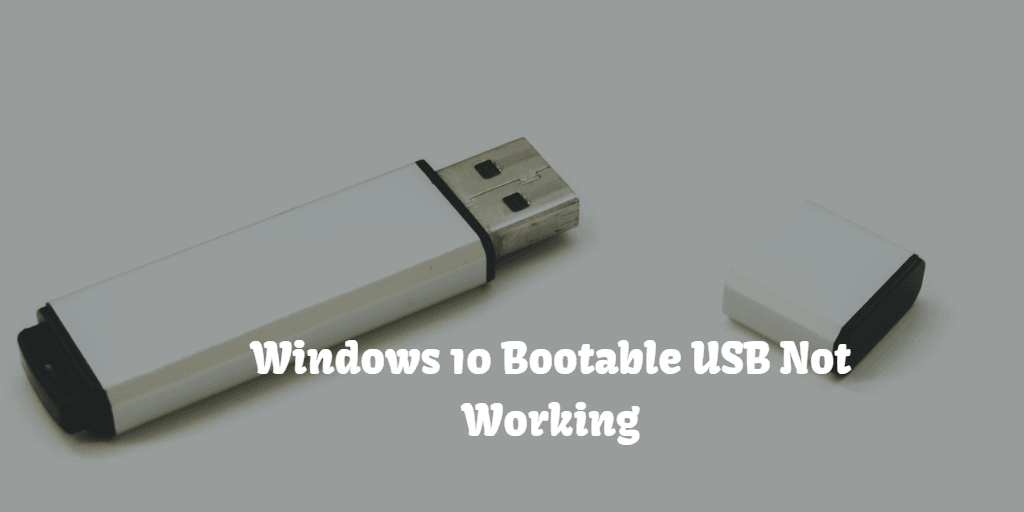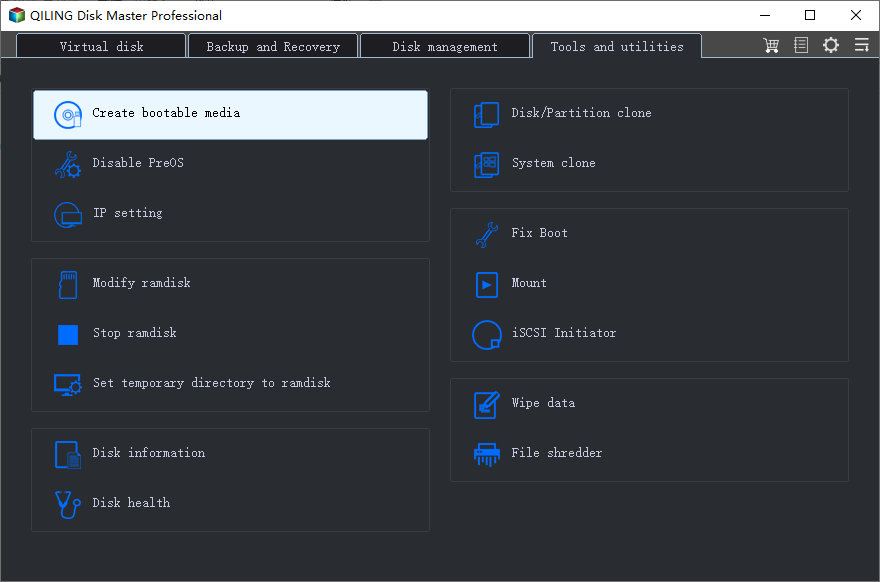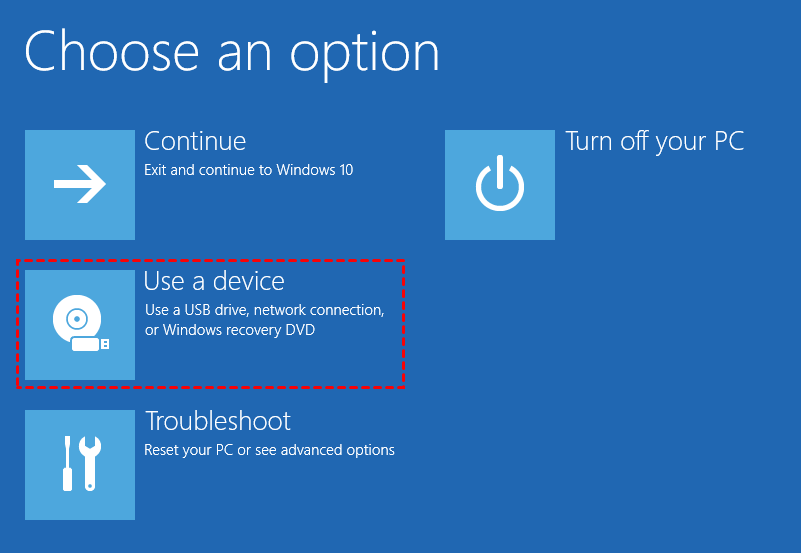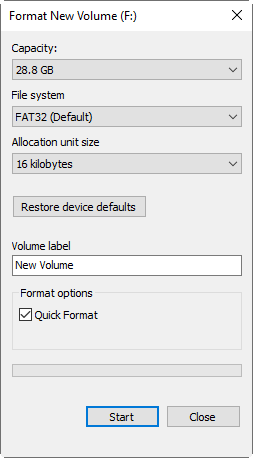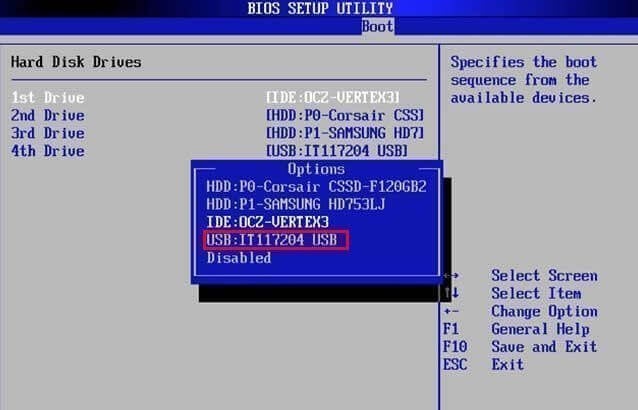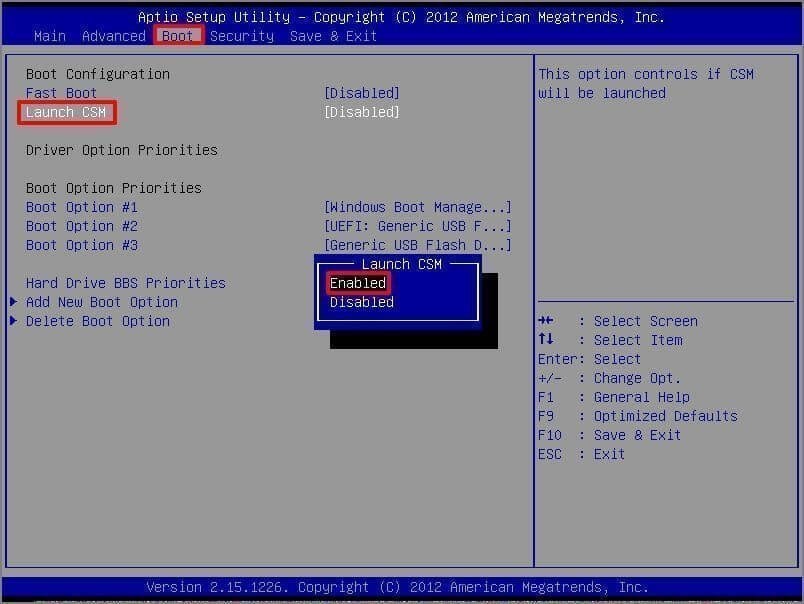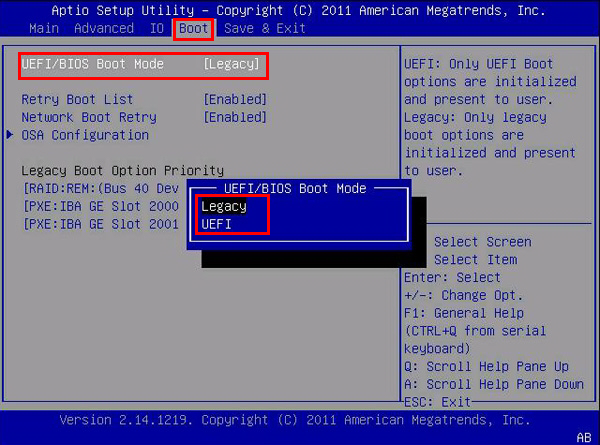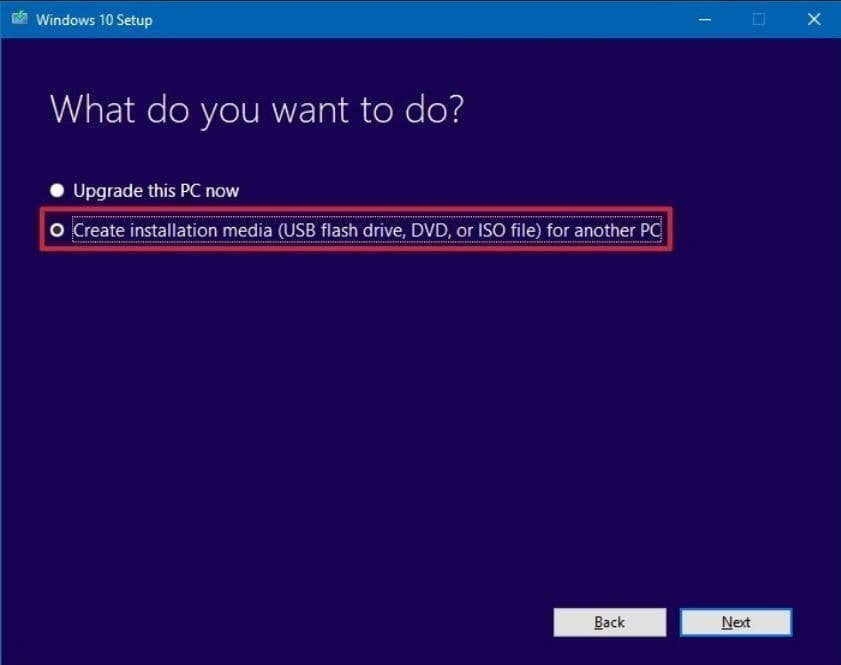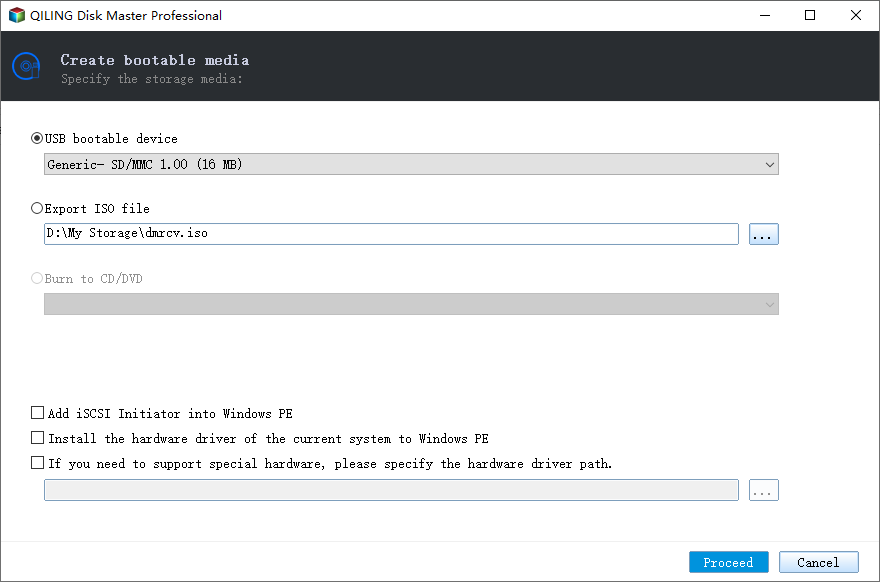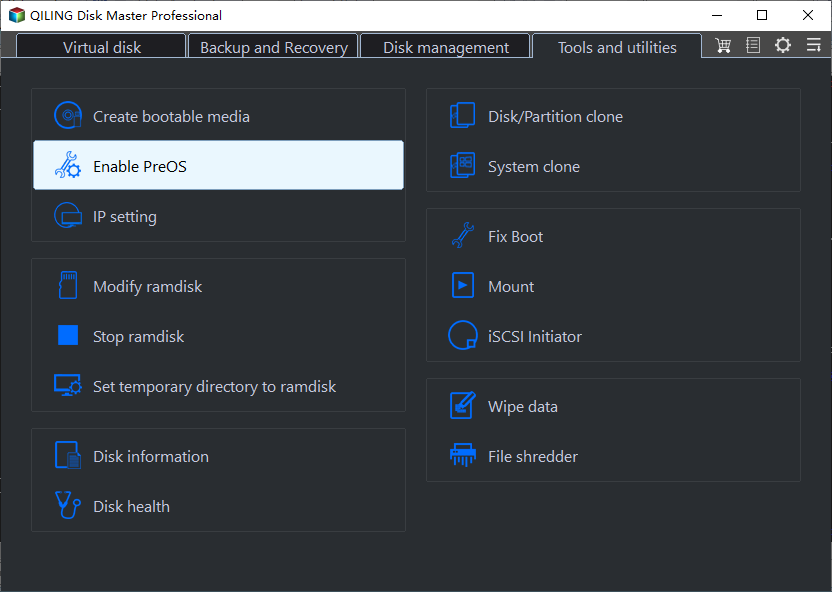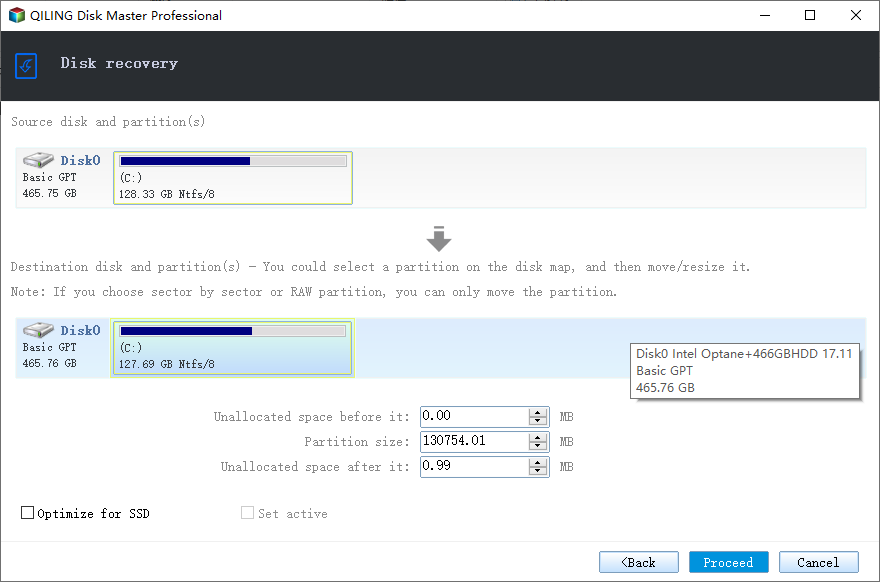Fixed: Windows 10/11 Bootable USB Drive Not Working (5 Ways)
Case: Windows 10 Bootable USB not working
A Bootable USB is a media that contains everything needed to boot Windows, allowing you to start up your computer and perform various tasks such as clean installing Windows, upgrading to Windows 10, or troubleshooting a faulty computer. However, sometimes you may encounter issues where Windows 10 won't boot from a USB drive, with no response or booting process initiated.
You're experiencing an issue with your Toshiba L875-S7308 laptop where it won't boot from a USB drive in UEFI mode, despite formatting the USB drive to MBR and GPT and restoring the ISO using the Windows 7 USB/DVD Download Tool. You've tried changing the boot order and manually selecting the USB drive, but it still ignores the USB drive and boots into Windows.
If you happen to be in a similar situation, you could stay for a while to learn more about Windows 10 bootable USB not working and then fix the error with given solutions.
Why Windows 10 bootable USB not working?
Windows 10 bootable USB issues may be caused by incorrect boot mode or file system. Specifically, older computer models often support Legacy BIOS, while newer models like Windows 8/10 use UEFI boot mode. This means that BIOS boot mode requires NTFS file system, whereas UEFI (with CSM disabled) requires FAT32.
If Windows 10 won't boot from a USB drive, it's not just a matter of the USB being faulty. Other reasons may be at play, such as a corrupted USB drive, a faulty USB port, a malfunctioning USB controller, or a problem with the USB drive's file system.
- Bootable USB is not detected as a boot device. This means your USB stick is either corrupted or unbootable itself, or USB boot is not supported on the computer.
- Bootable USB not showing up in BIOS. This may happen because of incorrect boot order. By default, your computer only boots from the first boot option.
- Bootable USB not showing up in boot menu. The issue is likely due to your USB drive being an older version, specifically USB 1.0 or 2.0, which is not compatible with Windows 10.
- You can't boot from USB in Windows 10, not even select the right boot option. The USB drive is likely damaged or corrupted, resulting in an error message like "no bootable devices found".
To fix the problem, you can try the approaches I'll provide, and if you're looking for an easier way or a Windows 10 bootable USB alternative, you can skip ahead to the 5th part.
This software enables booting both UEFI and BIOS systems, and also allows for system restoration to a previous date by creating a system image, making it compatible with Windows 7, 8, 10, and 11.
How do I know if my USB drive is bootable in Windows 10?
The Windows boot USB not working issue can be caused by either computer configuration or the USB drive itself. To resolve the problem effectively, it's essential to identify the root cause first, which can be done by checking if the issue lies with the computer or the USB drive.
👉 Try this bootable USB on another PC To troubleshoot a non-booting USB drive, first, ensure that the USB drive is bootable. You can check this by formatting the drive with a bootable operating system, such as Windows or Linux, and then trying to boot from it. If the USB drive is not bootable, it may be a configuration issue with your computer. Check your computer's BIOS settings to see if USB booting is enabled.
👉 If your PC is not booting from a USB drive, you can try using a different USB boot drive to see if it's bootable. If it is, the issue may be with your own USB drive.
You can boot your computer in two ways: using the Windows 10 quick boot menu "Use a device" or manually changing the boot order and then booting. The first option doesn't require changing the startup sequence in the BIOS.
Boot from quick boot menu - Use a device
Step 1. Press and hold the "Shift" key while clicking the "Restart" button, then your computer will reboot to the Advanced Startup Options screen, click "Use a device".
Step 2. Select the boot USB drive, wait and see if your computer boot from this drive.
Manually change boot order - set boot priority to USB drive
Step 1. Shutdown your computer and then start it.
Step 2. At the first boot screen, press the specified key when you see a prompt, such as "Press ESC to enter BIOS", and if your computer is in fast boot mode, you don't need to press any key.
Step 3. Go to the "Boot" tab and set the USB drive as the first option using up arrow.
Step 4. Press "F10" to save changes and restart your computer with USB dive.
How to solve Windows 10 not booting from USB stick (5 ways)
To use a USB drive as a boot option, it must be formatted in a way that makes it bootable. This is typically done using a tool like Rufus or the built-in Disk Management tool in Windows. Once the USB drive is formatted and made bootable, it will be recognized by the computer's BIOS as a bootable device and will be given priority over other devices in the boot sequence. This means that if you insert the USB drive and boot up your computer, it will attempt to boot from the USB drive instead of the hard drive. If the USB drive is not bootable, the computer will not attempt to boot from it and will instead continue to boot from the next device in the priority boot sequence.
If your Windows 10 bootable USB is not working, don't worry, it's a common issue. You can try to fix it by learning how to create a bootable USB drive using the Media Creation Tool, which can be downloaded from Microsoft's official website.
Fix 1. Make Sure the file system of USB drive is formatted as FAT32
If your computer is in Legacy BIOS mode, format the drive with NTFS file system. If it's in UEFI mode, format your USB with FAT32.
Press Windows + E to open File Explorer, right-click the USB drive and select Format, then select FAT32 file system and click Start to begin formatting the USB drive.
▪ list disk
▪ To format the USB flash drive, select the disk number of the drive you want to format, and type "select disk n", replacing "n" with the actual disk number of the USB flash drive.
▪ list partition
▪
▪ format fs=fat32 quick
Fix 2. Be sure the USB drive is set to be the first boot option
To restart your computer, press the key (e.g. F2, F11, ESC) on the first screen to enter BIOS.
If you're unable to see the USB boot option, it's possible that your computer doesn't support this feature. In this case, you may need to try alternative methods to boot from a USB drive.
Fix 3. Enable CSM or Legacy boot mode, and disable Secure Boot Control
To enter the BIOS screen, click "Boot" and select "Launch CSM" to enable it. Then, navigate to "Security" and disable "Secure Boot Control".
Fix 4. Change UEFI or Legacy BIOS boot mode
To enter the BISO screen, click on UEFI/BIOS Boot Mode or Launch Storage OpROM Policy, then select the appropriate mode, which is UEFI if the bootable drive is FAT32 or Legacy if it's NTFS.
Fix 5. Create a bootable USB with Windows media creation tool
If you're unable to create a bootable USB for Windows 10 and the given solutions don't work, you can create an installation disc using Microsoft's official Windows 10 media creation tool.
To create installation media for another PC, download the media creation tool first and then launch it. Select "Create installation media for another PC" and follow the on-screen instructions to complete this task.
If you've already fixed the error and have a bootable USB drive, you can proceed to check if you can boot from USB in Windows 10 and then repair Windows 10 with the bootable USB. To do this, simply follow these steps: [insert steps].
1. To set up a bootable USB, first, connect the USB drive to your computer. Next, enter the BIOS settings, which can usually be accessed by pressing a key such as F2, F12, or Del.
2. After Windows files have loaded, click Next until you see "Repair your computer" and select it.
3. To troubleshoot and access advanced options, click on "Troubleshoot" and then select "Advanced options". This will open a list of recovery tools, from which you can choose one and follow the instructions to begin the repair process.
To install Windows 10 on a new SSD, you can use a bootable USB drive. After booting from the USB, click "Install Now" instead of "Repair your computer" on the first Windows Setup interface, and then follow the clean installation wizard's prompts.
Fixing a non-working Windows 10/11 bootable USB requires a multi-step process. First, you'll need to use a different USB drive to create a new bootable USB, as the original one is not working. Once the new USB is created, you can use it to boot your computer and perform a fresh install of Windows, which will erase all installed programs, personal data, and settings. This process is a last resort and should only be used if you're willing to start from scratch.
If you don't lose all of your data, you can use the recovery tools to repair your computer. Having a system image on an external hard drive can solve most computer issues, as it contains a complete copy of your system disk and can be restored to a new hard drive on the same computer.
When the traditional system image restore method fails, such as when restoring to a smaller drive, a professional backup software can provide an alternative solution, allowing for a more flexible and effective recovery process.
Workaround for Windows 10 boot USB not working
You can use a third-party media creation tool, such as Qiling Disk Master Standard, to create a Windows 10 installation media or Recovery Drive, even if your computer is not functioning properly.
- This tool allows you to create a bootable USB drive, CD/DVD, or save an image of the system as an ISO file, providing a convenient and versatile way to manage and distribute operating systems.
- This software can be used on various Windows operating systems, including Windows 11, 10, 8, 7, XP, and Vista, both 32-bit and 64-bit versions.
- It's compatible with both BIOS or UEFI mode, without the file system limitation.
- The device can boot all brands of computers, including HP, Samsung, Dell, and ASUS, among others.
- This software enables you to create a system backup and schedule them in daily, weekly, or monthly intervals, ensuring you always have the latest computer status.
- The backup disk full issues can be improved in multiple ways, including adjusting the compression level to normal or high, utilizing intelligent sector backup, and implementing incremental backup to efficiently manage storage space.
Let's get started to create a universal bootable USB with Qiling Disk Master Standard.
Step 1. Download the freeware, install and launch it. Then click Create Bootable Media under the Tools tab.
Step 2. Tick USB Boot Device and then click Next to move on.
Step 3. Wait for the process and click Finish when it reaches to 100%.
Now, the bootable USB is created successfully, and you can use it to boot your computer and repair it at any time. However, to actually repair your computer, you'll need a system image created by Qiling Disk Master. If you don't have one, you can create one by following the steps below.
Step 1. Go back to the main page of Qiling Disk Master. Click System and System Backup in order.
Step 2. It will select everything you need for system restore. Select a destination path below to store the backup image.
Step 3. Confirm the operation and click Proceed.
- Notes:✎...
- If you have specific requirements for backup security and flexibility, you can customize this task using the "Options", "Schedule Backup", and "Backup Scheme" features, which I'll introduce you to in more detail.
- Schedule Backup: It allows you to set fixed intervals to run backup tasks automatically, such as daily, weekly, monthly, event trigger, and USB plug in, with the last two supported by the professional version.
- Incremental Backup: It can backup only changed files since the last backup, reducing backup time and disk space usage.
- Backup Scheme(Advanced): You can choose from three backup methods - Full, Differential, and Incremental - depending on your needs, and also enable the backup cleanup feature to automatically delete old backups and resolve disk full issues.
Now that everything is set up, you can use the bootable USB and system image to repair your computer at any time. To do this, simply boot your computer from the USB, navigate to Restore > Select Task or Image File, choose the backup image you want to restore, select a destination, and then click Proceed.
- Notes:✎...
- To restore a Windows 10/11 system image to a new hard drive, you can follow the steps outlined in the provided article. The article offers two ways to achieve this, and for more detailed instructions, you can refer to it directly.
- If your computer won't boot without a backup or bootable drive, you can use Qiling Disk Master on a working Windows 10 PC to create a bootable media and system backup, then use them to perform a dissimilar hardware restore on the problematic computer.
Conclusion
If Windows 10 bootable USB isn't working, you can try the given solutions to fix it. Alternatively, if you just want to get your computer back quickly without reinstalling Windows 10, you can create a brand-new bootable USB and system image with a free backup software like Qiling Disk Master Standard, which can save everything you need.
You can use the system image to recover your computer, restore it to a smaller drive as long as it can hold everything, and even restore it to a new computer with different hardware.
This software offers various useful features, including differential backup, backup scheme, real-time sync, and disk clone, among others. To learn more about its capabilities, you can download it and explore its features firsthand.
Related Articles
- Solved: Create a System Image Not Working for USB Drive in Windows 7/8/10
- Unable to Create Recovery Drive in Windows 10 - How to Solve
- Repair Windows 10: Create Repair Boot USB Drive
- How to Guide: Make Lenovo Boot from USB in Windows 10
- Restore Windows 10 from Recovery USB (4 Ways included)
